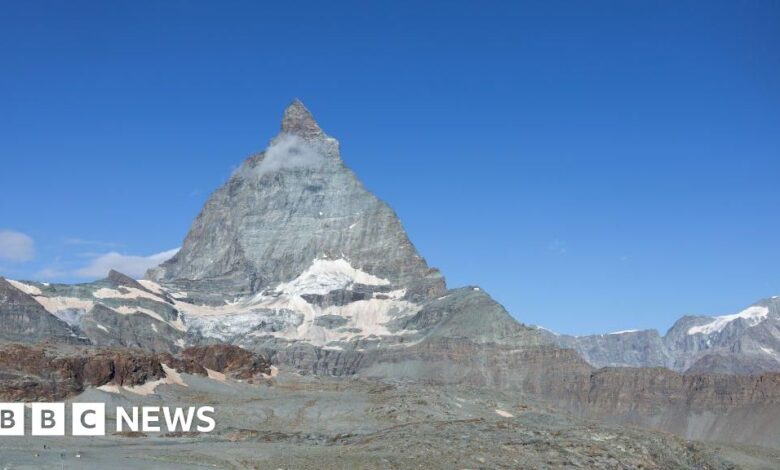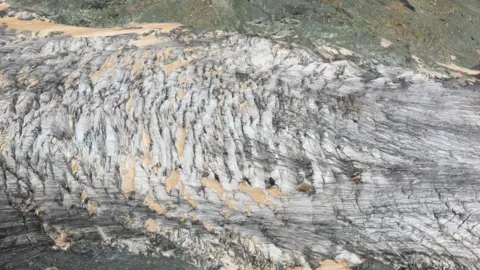Switzerland and Italy partially redraw their border on melting glaciers

 Getty Images
Getty ImagesSwitzerland and Italy have partially redrawn their border in the Alps due to melting glaciers caused by climate change.
Part of the affected area will lie below the Matterhorn, one of Europe’s highest mountains and near several popular ski resorts.
Much of the Swiss-Italian border is defined by glaciers or areas of permanent snow, but melting glaciers have caused these natural boundaries to change, leading both countries to Find ways to overcome borders.
Switzerland formally approved the change agreement on Friday, but Italy has yet to do so. This follows a draft agreement by the Swiss-Italian joint commission in May 2023.
Statistics published last September showed that Switzerland’s glaciers lost 4% of their volume by 2023, the second largest decline ever after a record 6% melt in 2022.
An annual report is issued each year by the Swiss Glacier Monitoring Network (Glamos), which attributes the record losses to consecutive very warm summers and very low snowfall in the winter. 2022. Researchers say that if these weather patterns continue, ice melt will only accelerate.
On Friday, Switzerland said the redefined borders had been drafted in accordance with the economic interests of both sides.
It is thought that clarifying the border will help both countries determine which country is responsible for preserving specific natural areas.
The Swiss-Italian boundary will be changed in the Plateau Rosa area, Carrel refuge and Gobba di Rollin – all close to the Matterhorn and famous ski areas including Zermatt.
The exact border changes will be made and the agreement will be announced after both countries sign it.
Switzerland said the process of approving the signing of the agreement is underway in Italy.
 Getty Images
Getty ImagesLast year, Glamos warned that some glaciers in Switzerland were shrinking so fast that they were unlikely to be saved, even if global temperatures were kept within the Paris climate agreement’s 1.5C target increase.
Experts say that without the greenhouse gas reductions linked to global warnings, larger glaciers like the Aletsch – which are not on the border – could disappear within a generation.
 Swiss Police/Canton Valais
Swiss Police/Canton ValaisSeveral discoveries have been made on Swiss glaciers in recent years as they melt and shrink rapidly.
Last July, Human remains found near Matterhorn confirmed to be that of a German climber missing since 1986.
Climbers crossing the Theodul glacier above Zermatt noticed a hiking boot and crampons emerging from the ice.
In 2022, debris from the plane that crashed in 1968 emerged from the Aletsch glacier.
And the body of missing British climber Jonathan Conville was discovered in 2014 by a helicopter pilot who spotted something unusual while transporting cargo to a mountain shelter on Matterhorn.





